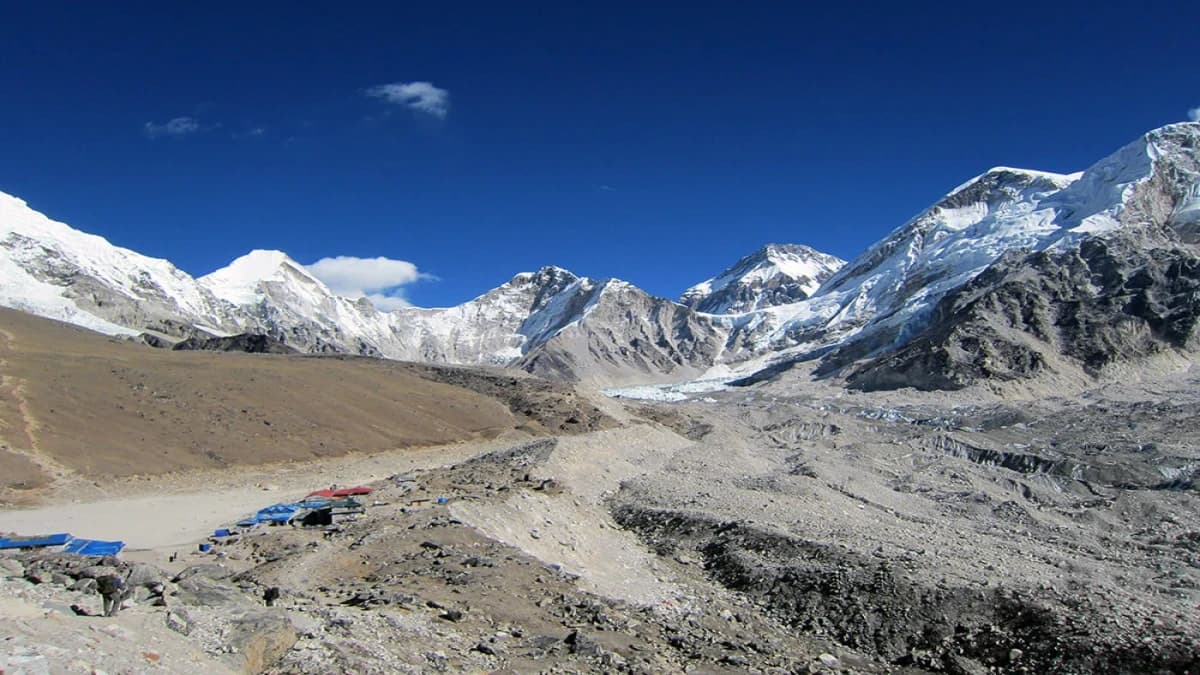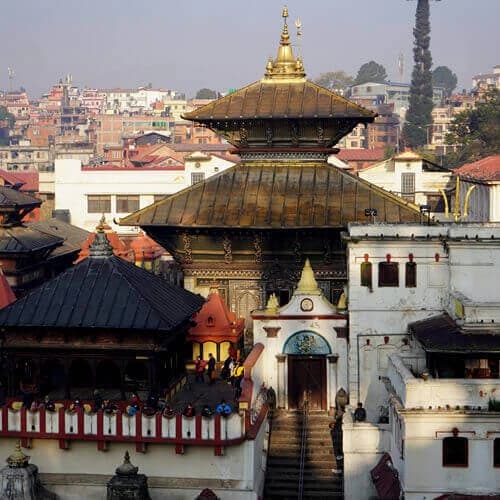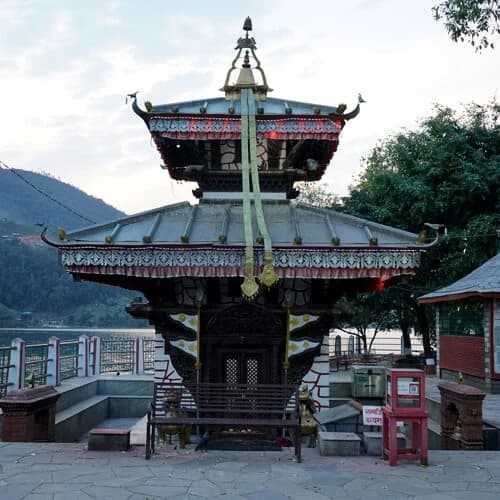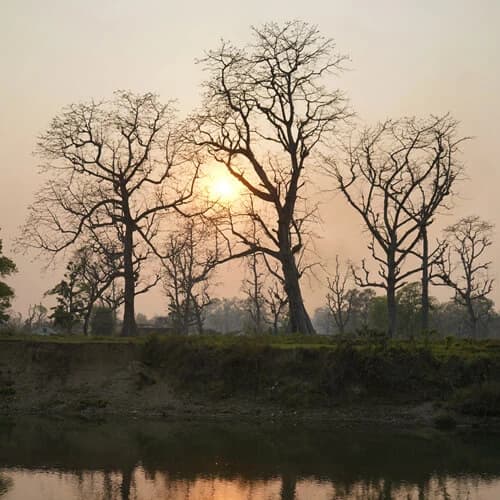Highlights of Everest Base Camp and Kala Patthar Trek
- Experience the adrenaline-pumping achievement of standing on Kala Patthar at (5550 m/18,208 ft) with the 360-degree views of Mount Everest's south face, and other neighboring peaks.
- Reach the Everest Base Camp, and experience the thrill and motivation of climbers who are setting out to conquer the summit of Mount Everest (8,850 m/29,035 ft).
- Enjoy breathtaking views of mountains such as Makalu (8,463 /27,766 ft), Cho Oyu (8,201 m/26,906 ft), Lhotse (8,516 m/27,940 ft), Pumori (7,161 m/23,494 ft), Nuptse (7,861m / 25,791 ft), Thamserku (6,623 m/21,729 ft), and Ama Dablam (6,812 m/22,349 ft).
- Stand before the Khumbu Icefall (5,486 m/17,999 ft), a vast glacial moraine, and experience the raw power of the Himalayas.
- Enjoy the exhilarating mountain flight to the Tenzing Hillary Airport (2,860 m/9,383 ft)in Lukla, one of the highest in the world.
- Explore the traditional villages like Lukla, Namche, Dingboche, Lobuche, and visit local attractions such as the Sherpa Cultural Museum.
- Witness the daily ritual of monks at Tenboche Monastery, and observe the prayer flags, mani walls, and chortens, all of which are integral to Tibetan Buddhist cultural heritage.
- Opportunity to see the scalp of the Yeti in Khumjung village.
- Hike through the Sagarmatha National Park, passing by dense rhododendron forests filled with diverse species of flora and fauna.
- Chance to encounter elusive wildlife such as the elusive Snow Leopard.
- Stay at traditional Sherpa teahouses and experience their unique lifestyle, rich culture, and delicious local cuisine.
- Take a short hike to the Everest View Hotel (3,880 m/12,730 ft)and relax, enjoying exquisite meals and beverages while observing the stunning panoramic views.
Overview of Everest Base Camp Kalapatthar: An Unforgettable Summit Achievement
Everest Base Camp (5,364 m/17,594 ft) is a popular trekking destination in Nepal, offering travelers a close-up view of the world's highest peak, Mount Everest (8,848.86 m/29,029 ft). And with the additional hike to Kala Patthar (5,545 m/18,192 ft), the highest point of the trek, it becomes an adrenaline-pumping expedition to one of the world's most breathtaking viewpoints. The spectacular sunrise view over the mountain peaks is an awe-inspiring moment, one that will last a lifetime and create a memory. However, this might have you wondering how challenging the trek is, and what I will truly see?
The 15-Day Everest Base Camp Kalapathar Trek is moderately challenging and suitable for physically fit travelers seeking an unforgettable Himalayan experience. The journey's ultimate reward is the ascent to the iconic Kala Patthar, renowned as a vantage point for spectacular and unobstructed 360-degree panoramic views of the mountains in the Everest region. The scenery features an awe-inspiring vista of four of the world's six tallest peaks, including Mt. Everest, Mt. Lhotse, Mt. Makalu, and Cho Oyu.
Our adventure begins with a picturesque 45-minute flight from Kathmandu to Tenzing-Hillary Airport, Lukla. You will then follow in the footsteps of Sir Edmund Hillary and Tenzing Norgay, and draw inspiration from their motivation and determination to overcome the challenges ahead. You will enter the Sagarmatha National Park and pass by numerous traditional Sherpa villages. This includes settlements such as Phakding, Namche Bazaar, Tyangboche, Dingboche, and Lukla. Now, halfway through the journey, you will begin the ascent to EBC, and make your way back through rugged terrains and the frozen lake bed of Gorakshep towards Kala Patthar.
On this remarkable journey to the Himalayas of Nepal, you will also experience the culture and traditions of the Sherpas. The indigenous community is renowned for its climbing expertise and resilience to high-altitude conditions. During your stay at the teahouses, you will have the opportunity to enjoy their local cuisine, including Shyakpa, Tingmpo, and Tsampa, as well as beverages such as Su-Chya. Most Sherpa people follow Tibetan culture, which can be observed closely during visits to Tengboche Monastery and Pangboche Monastery. For a deeper immersion, we recommend traveling during November, when the Mani Rimdu Festival is celebrated.
Who will be leading your Trek to EBC Kalapathar?
Your expedition is led by professional local guides who are knowledgeable of the routes, landscape, history, and culture of the Everest region. Our trekking guides, such as Balaram Khadka and Amar Khan, have more than a decade of experience in leading successful Trek to Everest Base Camp and Kala Patthar.
They hold official certifications from the NMA (Nepal Mountaineering Association) and the NTB (Nepal Tourism Board) in advanced wilderness first aid, rescue operations, and altitude sickness management. Their expertise in the field enables you to navigate inclined trails, rocky terrain, and glacial moraines. Our guide stay proactive throughout the journey to manage risk and ensure your safety, allowing you to enjoy the breathtaking view from Kala Patthar.
What a Typical day on the Trek looks Like
Travelers who are planning a high-altitude trek often wonder how demanding or complicated the journey ahead might be. And it's a regular part of the preparation process to set realistic expectations for the trip. To ease your anxiety, we will guide you through what your day on the trail looks like during the Everest Base Camp with Kala Patthar trek.
Your day typically begins around 6:00 AM after a wakeup call from our guide, who will inform you that breakfast is ready. Afterward, you will then start preparing for the trek ahead and ensure your luggage is complete. We will then take advantage of the clear morning weather and kick the trail early to ensure a well-paced ascent to our next destination.
On average, you will be walking 5 to 7 hours on the trail, covering an approximate distance of 12 to 15 kilometers. The trail you will be hiking on ranges from well-maintained paths to several rocky sections, both uphill and downhill. So, we must maintain a steady pace to suit your or the group's physical capability, avoiding overexhaustion and fatigue.
At noon, we will stop by a teahouse or lodge along the trail for a brief break and lunch, replenishing ourselves after the long hike. From here onwards, the walk is usually slow and gradual, with plenty of rest along the way. By late afternoon, you will arrive at our destination for the day, a village, where we will have dinner and spend the night.
The route you will be walking daily takes you through the heart of the Everest/Khumbu region. This allows you to witness an authentic Himalayan lifestyle and a traditional Sherpa college. Throughout the trail, you will pass by several spiritual monuments, chortens, and gompas against the backdrop of towering peaks. We highly recommend stopping by these places to capture their magic and create memories to share for a lifetime.
Why Choose Outfitter Nepal as your Traveling Partner?
Outfitter Nepal has been operating for over 15 years, arranging tours and treks in the Everest, Annapurna, Langtang, and Manaslu regions of Nepal, with a 95% success rate. Our company has built its reputation as a trustworthy travel partner through our local expertise, meticulous planning, transparency, and exceptional customer service.
We adhere to industry standards and are affiliated with official governing bodies, including the Nepal Tourism Board and the Trekking Agencies' Association of Nepal (TAAN). By traveling with us, you have a complete support system of guides, support staff, and porters to take away the logistical nightmares of traveling and focus on the journey ahead!
Our Commitment to Safety and Emergency Protocols
The 15-day Everest Base Camp with Kalapatthar itinerary has been designed to address the risks associated with high-altitude trekking. The trip includes two acclimatization stops at Namche Bazaar and Dingboche to minimize the probability of Acute Mountain Sickness (AMS). Furthermore, your guide will be well-equipped with a first aid kit, oximeter, and oxygen canister. Medical devices, such as oximeters, will be used to check your blood oxygen level and physiological response to altitude in real-time.
This allows your guide to adjust the pace of the trek and make decisions in case you start showing signs of physical distress. In the event of a medical emergency, our team is ready to facilitate the swift arrangement of a helicopter evacuation (covered by your travel insurance) to the nearest health facility. Although the insurance policy is not mandatory, we highly recommend that our travelers obtain one, as it provides critical financial protection.






